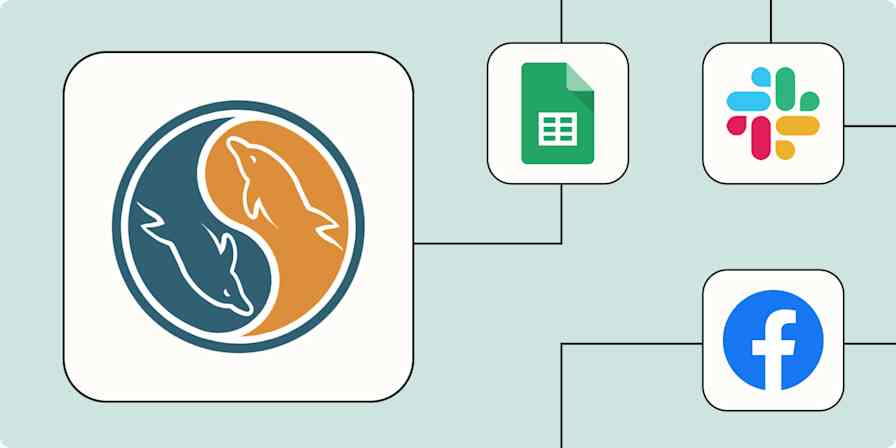Getting my toddler to eat a well-balanced meal feels like running a high-stakes strategy meeting, except my negotiation partner is a stubborn tiny human who somehow always wins. My big-picture goal (OKR)? Get him to eat something other than pasta, rice, and pouches. My day-to-day tracking (KPI)? How many bites of veggies actually make it into his mouth instead of on the floor.
Just like me with my toddler's eating habits, businesses need both OKRs and KPIs. OKRs define the overall direction, while KPIs provide the data needed to assess progress and make adjustments. Ultimately, both OKRs and KPIs work together to drive meaningful progress. For a business, this might mean increased revenue or market share. For a parent, it's a decent meal and a happy kid.
Below, I'll break down the differences between an OKR vs. KPI and how they can work together to help you achieve your long-term goals.
Table of contents:
What is an OKR?
Objectives and key results (OKRs) are an ambitious goal-setting framework designed to drive focus and alignment among teams. The framework is pretty simple: define a qualitative, aspirational business objective, then outline three to five key results to help you achieve and measure progress toward that objective.
Basically, the objective is the what and the key results are the how. For me, my objective might be "Foster healthy eating habits." It's qualitative, aspirational (or wishful thinking), and a long-term vision. To measure progress toward that lofty goal, my key results might look something like this:
Key result 1: Introduce three new vegetables into his diet this month.
Key result 2: Offer at least three different food groups at each meal.
Key result 3: Have him assist with meal preparation two times per week to make mealtime more enjoyable.
What makes OKRs different from other goal-setting frameworks is their focus on ambition and measurability. Objectives are meant to be slightly stretchy, pushing you beyond "business as usual." Key results are always quantitative, providing clear metrics for tracking progress and areas for improvement.
OKRs are usually set quarterly, and for good reason: it gives teams enough time to actually get stuff done. Every quarter is the sweet spot, giving you enough time to make progress but not so long that you can't change course and reanalyze your strategy if needed.
Just like how I might tweak my kid's meals every few months as he grows, businesses can revisit their OKRs and make sure they're still headed in the right direction. This regular review also helps you understand how your OKRs are impacting day-to-day performance, or KPIs, which I'll get into more later.
OKR example
Objective: Improve customer satisfaction and loyalty.
This objective is qualitative and aspirational, setting the direction for what you're trying to achieve. It's not measurable on its own, though, which is where key results come in:
Key result 1: Increase Net Promoter Score (NPS) by 10 points by year-end.
Key result 2: Reduce customer churn rate by 5% in the next quarter.
Key result 3: Increase positive customer reviews on main platforms by 20%.
These key results are all measurable and directly contribute to the overall objective by providing concrete metrics that can be tracked. Together, they provide a holistic view of progress toward the objective.

What is a KPI?
Key performance indicators (KPIs) are metrics used to track and monitor the performance of different business activities—everything from sales and marketing campaigns to customer service and product development. They help you understand how well these activities are performing and how they're contributing to overall business goals.
While they don't tell you what actions to take like OKRs, they provide valuable data to help inform decisions and identify areas for improvement. However, KPIs often play a crucial role in measuring the success of your OKRs, showing you whether your strategies are actually moving the needle (more on that later).
KPI examples
Sales KPIs
Customer acquisition cost (CAC)
Customer lifetime value (CLV)
Conversion rate
Customer service KPIs
First contact resolution (FCR)
Average response time
Customer satisfaction (CSAT)
Marketing KPIs
Bounce rate
Website traffic
Return on ad spend (ROAS)

Key differences between OKRs and KPIs
OKRs and KPIs are often lumped together, and it's easy to see why—the KR aspect of OKRs feels really similar to KPIs. They both involve metrics and contribute to business success. But despite their overlap, they're pretty different.
OKRs are a framework for setting aspirational goals and outlining measurable steps to get there. They encourage stretch thinking and help teams stay on track.
KPIs are trackable metrics used to analyze ongoing performance, spot trends, and predict future improvements for existing initiatives or activities.
| OKRs | KPIs |
|---|---|---|
Purpose | Inspire and align teams on goals | Monitor ongoing performance |
Timeframe | Typically quarterly or annually | Continuous, ongoing |
Focus | Ambitious, big-picture objectives, stretch goals | Specific, operational metrics with realistic and consistent tracking |
Duration | Measured and set quarterly | Measured on an ongoing basis |
When to use OKRs vs. KPIs
KPIs are best for tracking how things are going right now, while OKRs are good for chasing new goals and opportunities.
Use KPIs when you need to track ongoing performance and measure how well an existing process is working. Think of a SaaS company tracking monthly active users or monitoring customer retention. KPIs ensure everything stays on course.
Use OKRs when pursuing new strategies or setting bold, ambitious goals. For example, if a startup is expanding into a new market, OKRs help rally the team around priorities and keep everyone moving toward the same goal.
How OKRs and KPIs work together
At this point, it might feel like I've set up a showdown between OKRs and KPIs, as if you have to choose one or the other. Either your kid has veggies or you live a happy life. But in reality, they're not mutually exclusive and actually work really well together. If a KPI is struggling—like an exhausted parent trying to feed their toddler—an OKR can provide the strategy to improve it.
For example, let's say your company tracks response time as a KPI, with a target to respond to inquiries within four hours, but lately, response times have slipped to eight hours or more due to a lack of resources and an overwhelmed support team. Instead of continuing to track that KPI in hopes it will improve, set an OKR to improve it.
So, your OKRs could look something like this:
Objective: Drastically improve customer support efficiency.
Key result 1: Hire and onboard five new support reps within the next quarter.
Key result 2: Implement a chatbot to handle 30% of initial customer inquiries.
Key result 3: Reduce the average number of customer support tickets assigned to each rep by 25%.
By setting these OKRs, you can improve your response time KPI.
But they can also work the other way around. KPIs can act as performance indicators to track progress toward achieving your OKR.
For example, rolling out a chatbot is tied to the first contact resolution (FCR) rate KPI, a key measure of how effectively customer issues are resolved on the first try. Using both strategies will make it easier to stay on course.

Reach your OKRs and KPIs through automation
Whether you're leading a business or trying to win at mealtime, the key to success is tracking progress and setting the right goals. If you need help in the process, automation has you covered.
You can automate KPI data collection and optimize OKR workflows by connecting your favorite apps with Zapier so you can do things like send Salesforce lead data to individual reps in Slack, get Gmail notifications when you receive Typeform submissions, save new Google tasks in Notion, and turn Jotform submissions into Jira requests without lifting a finger. Build your own custom workflow, or try one of these templates for yourself and start building fully automated systems for your business.
More details
More details
Then you can spend less time buried in spreadsheets and more time focusing on strategy (or, in my case, convincing my toddler that broccoli is not the enemy).
OKR vs. KPI FAQ
What's the difference between OKR and KPI?
OKRs are a framework for setting ambitious goals paired with measurable steps to achieve them, while KPIs are ongoing metrics that track performance related to specific business objectives.
What are the benefits of using OKRs?
The biggest benefit of using OKRs is that they turn big-picture objectives into clear, measurable targets that keep teams focused and accountable. This makes it easier to track progress, encourage motivation, and celebrate wins.
How often should KPIs be set?
Most businesses set KPIs yearly and review them quarterly, but high-priority ones (think sales or website traffic) may need weekly or even daily tracking.
Can you use OKRs and KPIs together?
Absolutely—OKRs and KPIs can be a powerful duo. KPIs help you understand your current performance, while OKRs push you to improve those numbers to reach your bigger goal. You can use your KPI data to set OKRs and use those same KPIs to track progress toward your key results.
Related reading:










